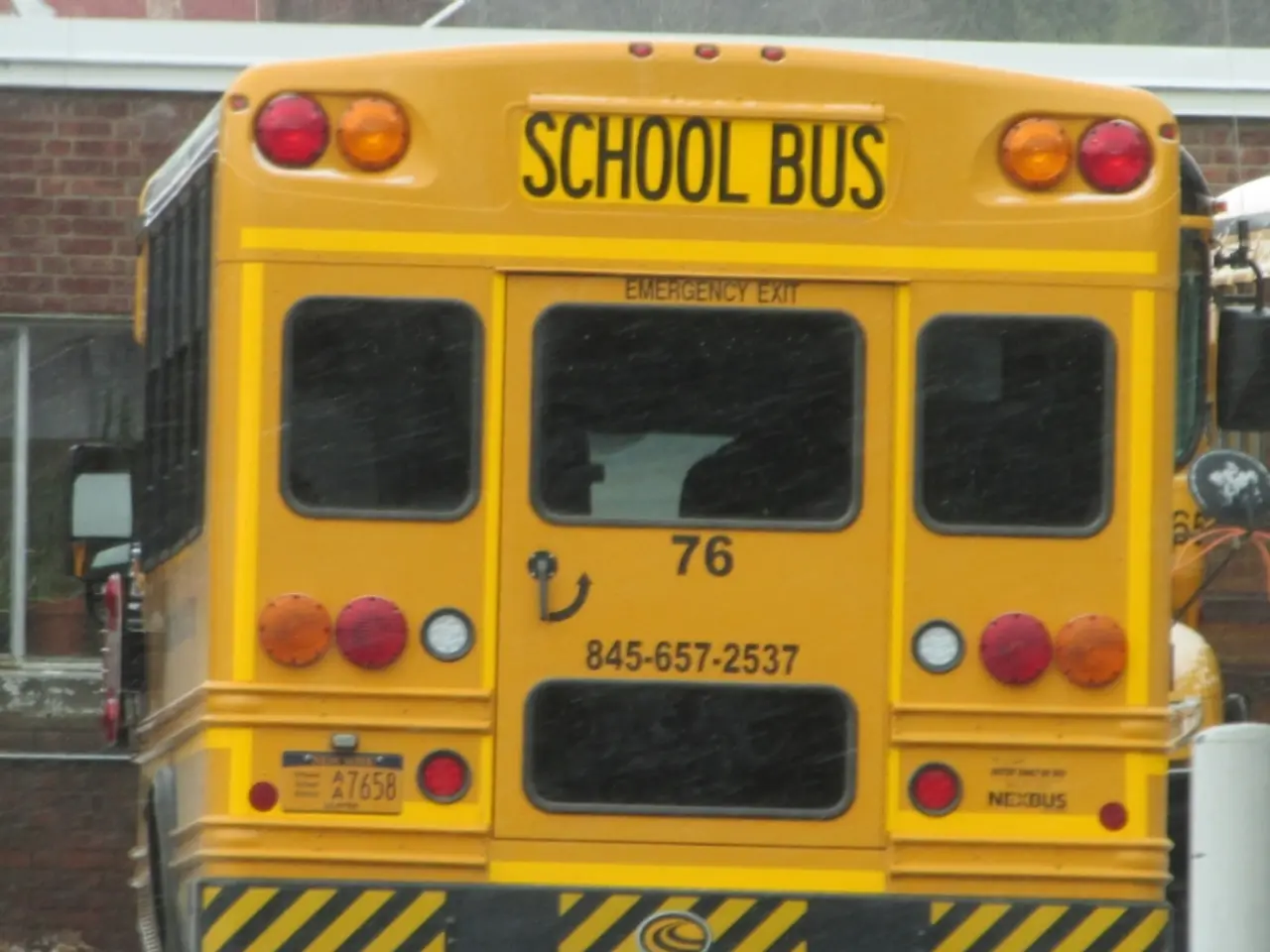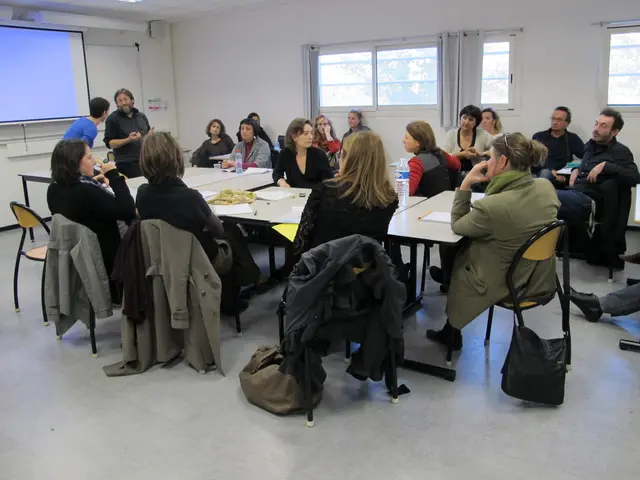Nepal's Education and Reading Ability Levels Found in Society
In the heart of Nepal's picturesque landscapes, the journey towards improving education and literacy in rural areas is marked by both challenges and promising developments.
Challenges in the Path
Academic underachievement and psychosocial problems, such as behavioral issues, peer conflicts, substance abuse, and school violence, are prevalent among students in rural Nepal, impacting their learning outcomes significantly [1]. Additionally, teacher retention remains a significant problem, with remote rural schools struggling to keep qualified teachers due to the harsh climatic conditions and isolation [2].
Limited quality education access, due to under-resourced public schools, especially in remote regions like Karnali, results in lower productivity potential of children (46%) compared to more urban regions (58%) [3]. Overcrowded classrooms, insufficient inclusive infrastructure, and a lack of modern teaching resources further hinder the delivery of equitable and inclusive education [4].
Moreover, limited mother-tongue-based and contextual learning materials have yet to be fully implemented in rural schools, which is crucial in Nepal's diverse linguistic landscape [4]. Lastly, the digital divide, where rural communities face poor connectivity, lack digital literacy, and face language barriers, limits access to digital learning resources and innovations [5].
Promising Approaches and Success Stories
Despite these challenges, there are promising approaches and success stories that offer hope for improvement. The Rolwaling Sangag Choling Monastery School in the Himalayan valley provides holistic, value-based education rooted in local culture and Buddhist values to rural students [2].
Grants from Social Services Funds support free education and nutritious meals for rural children, helping to reduce barriers caused by poverty and malnutrition [2]. The Ministry of Education's initiative to train teachers in guidance and counseling (G&C) aims to address academic, social, and emotional challenges, improving students' wellbeing and academic success [1].
Emphasis on inclusive education policies provides need-based scholarships, assistive devices, disability-inclusive infrastructure, child protection, gender-responsive spaces, and WASH facilities to improve attendance and retention [4]. Moves towards competency-based, student-centered learning, aligned with the national curriculum and Universal Design for Learning (UDL) principles, including continuous teacher professional development with ICT support, are also being implemented [4].
Expanding Technical and Vocational Education and Training (TVET) opportunities, linking education with labor market needs, enhances the employability of rural youth [4]. Addressing rural digital exclusion through initiatives inspired by regional examples like India’s GramIN Tech Adoption Centres and Project Zaraat highlights the potential for grassroots, community-driven tech adoption improving rural education and livelihoods [5].
The Road Ahead
The challenges faced by the education and literacy sector in Nepal, including a lack of funding, inadequate infrastructure, and teacher shortage, are significant. However, targeted support through community-involved schools, government policy shifts towards inclusivity and counseling, and efforts to bridge the digital divide mark significant progress in improving literacy and education outcomes [1][2][3][4][5].
The ABC Campaign in Rural Nepal is one such initiative aimed at improving literacy for children in rural areas. The education system and literacy rates in Nepal have made significant progress in recent years, but they need to continue improving to contribute to the development and growth of Nepali society. The right support and resources are needed for this progress to continue.
- In an attempt to address the learning challenges faced by rural students in Nepal, efforts are being made to establish more community-involved schools that prioritize personal development and local culture, such as the Rolwaling Sangag Choling Monastery School.
- Recognizing the importance of education and self-development, the Ministry of Education in Nepal has launched initiatives to train teachers in guidance and counseling, aiming to enhance students' academic and emotional wellbeing.
- To ensure an inclusive learning environment for all students in rural Nepal, the education system is adopting student-centered learning approaches and encouraging the implementation of need-based scholarships, modern teaching resources, and disability-friendly infrastructure.




